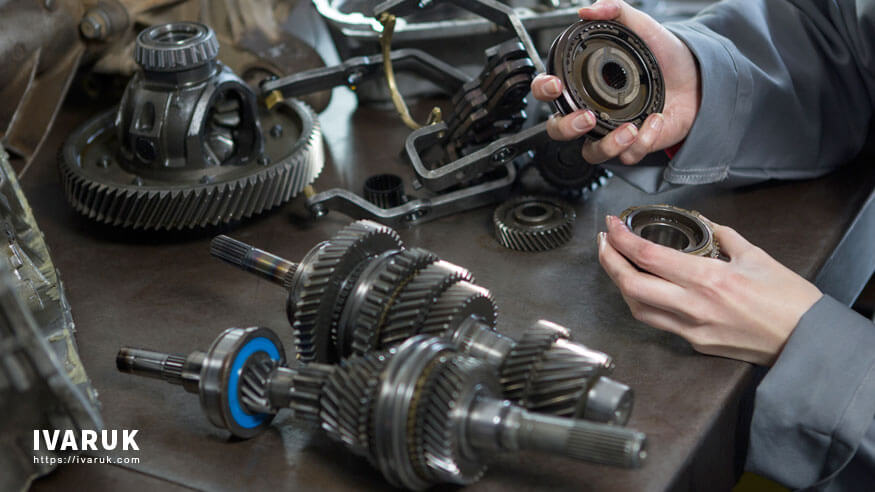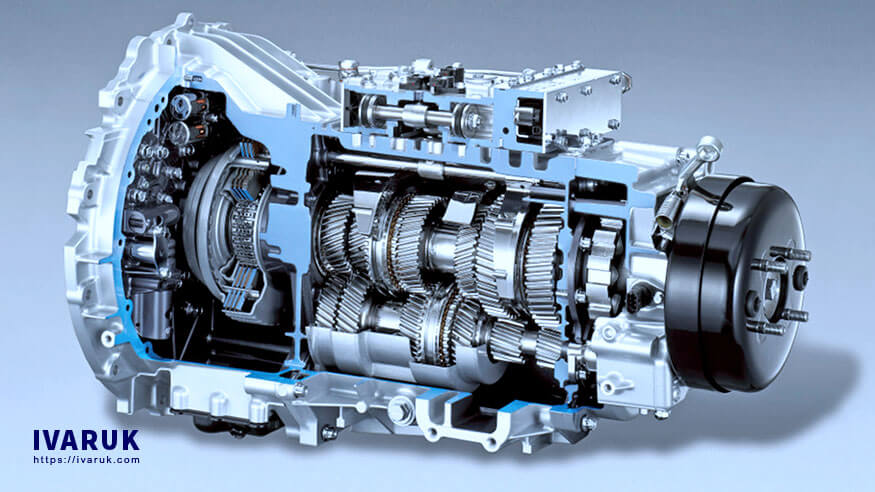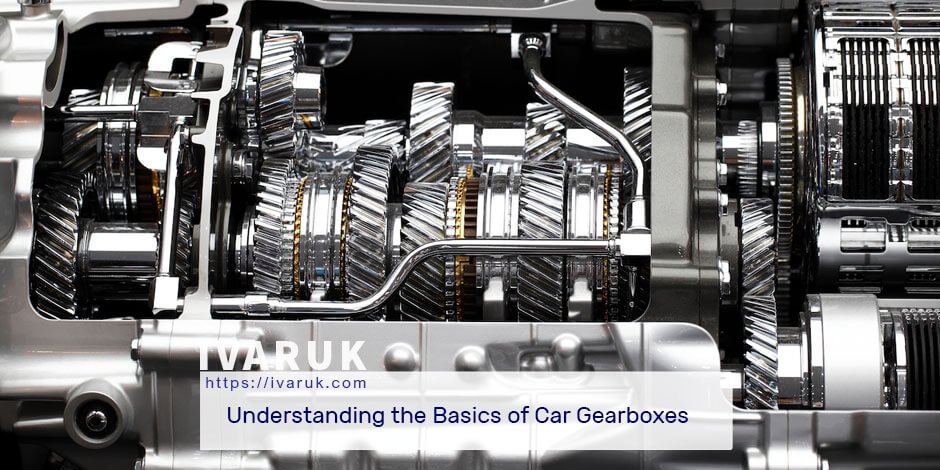Table of Contents
ToggleDemystifying Car Gearboxes: The Ultimate Guide
Car gearboxes, often a mystery to many drivers, are a vital part of your vehicle’s mechanics. In this comprehensive guide, we unravel the complexities of car gearboxes, shedding light on their significance and their impact on your driving experience. By adhering to the characteristics of influential blogs, we ensure that this guide is not just informative but also engaging and insightful.
what is the gearbox in a car?
The gearbox in a car is a crucial component that controls how fast or slow the car moves. It transmits power from the engine to the wheels, allowing you to choose different speeds for driving, whether it’s forward or backwards. In essence, it’s what enables you to control your car’s motion and speed.
Deciphering the Role of Car Gearboxes
At its core, a car’s gearbox, or transmission, serves a pivotal function: transmitting power from the engine to the wheels. This process empowers your car to move forward or backwards at varying speeds. In simpler terms, a car’s gearbox gives you control over your vehicle’s speed, whether you drive an automatic or a manual. It’s a key factor in defining your driving experience.
Join us as we delve into the intricacies of car gearboxes and gain a deeper understanding of these essential components.
Types of Car Transmissions
Car transmissions come in two primary types: manual and automatic. Each type has its unique characteristics and advantages.
Manual Transmissions: Manual transmissions, often referred to as “stick shifts,” require the driver to manually engage and disengage gears. This hands-on approach provides a greater sense of control over the vehicle’s speed and power. Many driving enthusiasts appreciate the tactile feedback and engagement of manual transmissions, making them a preferred choice for sports cars and performance vehicles.
Automatic Transmissions: Automatic transmissions, on the other hand, do the gear-shifting work for you. They are known for their convenience, allowing drivers to focus more on the road and less on gear changes. Automatic transmissions are common in modern vehicles, particularly in urban environments where stop-and-go traffic is prevalent.
Components of a Car Gearbox
To comprehend how a gearbox functions, it’s essential to understand its key components. Let’s take a closer look at the integral parts that make up a car’s gearbox:
- Gear Shafts: Gear shafts are responsible for transmitting power from the engine to the wheels. They come in various sizes and are designed to handle different speed ratios.
- Gears: Gears are toothed wheels that mesh with one another. They come in various sizes and are responsible for controlling the speed and power of the vehicle.
- Clutch (Manual Only): In manual transmissions, the clutch is the mechanism that disconnects the engine from the gearbox. It allows the driver to change gears smoothly.
- Torque Converter (Automatic Only): In automatic transmissions, the torque converter plays a similar role to the clutch but operates differently, allowing for smooth gear changes without manual input.
- Transmission Fluid: Transmission fluid is the lifeblood of your gearbox. It lubricates the moving parts, keeps them cool, and ensures smooth gear shifts.
Understanding how these components work together is key to grasping the inner workings of your car’s gearbox. In the next sections, we’ll delve deeper into the specifics of manual and automatic transmissions.
Elevate Your Drive with IVARUK: Exclusive Gearbox Repair Services
At IVARUK, we’re not just experts in car inspection and repair; we’re your dedicated partners in elevating your driving experience. Your car’s gearbox is its beating heart, and we’re here to ensure it runs at its absolute best. Our commitment to your satisfaction sets us apart. contact us!
Manual vs. Automatic: Which is Right for You?
The choice between a manual and an automatic transmission often comes down to personal preference and driving habits. Let’s explore the characteristics and considerations for each type to help you make an informed decision.

Manual Transmissions:
Manual transmissions offer:
- Greater control over gear selection.
- Engaging driving experience for enthusiasts.
- Better fuel efficiency in some cases.
- Lower maintenance costs due to simplified design.
However, they also require more effort in heavy traffic and may have a steeper learning curve for new drivers.
Automatic Transmissions:
Automatic transmissions provide:
- Convenient and effortless driving, especially in heavy traffic.
- Smooth gear changes without manual input.
- Accessibility for drivers of all skill levels.
- The ability to focus more on the road.
However, they may be less engaging for driving enthusiasts and can be slightly less fuel-efficient in certain situations.
Ultimately, the choice depends on your driving preferences and needs. Whether you prefer the tactile feel of a manual or the convenience of an automatic, understanding the gearbox’s role in your car is essential. In the next sections of this guide, we’ll explore the maintenance aspects of car gearboxes and offer tips for a trouble-free driving experience.
Transmission Fluid: The Lifeblood of Your Gearbox
- Your car’s gearbox relies on transmission fluid to operate smoothly and efficiently. This specialized fluid serves several crucial functions:
- Lubrication: Transmission fluid reduces friction and heat generation within the gearbox. It keeps the gears and other components running smoothly.
- Cooling: It helps dissipate heat generated during gear shifts and continuous operation, preventing overheating.
- Sealing: Transmission fluid creates a tight seal in the gearbox, preventing leaks and ensuring proper operation.
- Cleaning: It removes contaminants and debris from the gearbox, enhancing its longevity.
Given its vital role, it’s essential to monitor and maintain your transmission fluid regularly. Neglecting it can lead to costly gearbox repairs. Here’s what you need to know:
Checking and Changing Transmission Fluid:
Consult your car’s owner’s manual for the recommended transmission fluid change intervals. Typically, this falls between 30,000 and 60,000 miles. However, it’s wise to check your transmission fluid level periodically.
To check the fluid:
- Park your car on a level surface and turn off the engine.
- Locate the transmission dipstick (usually marked in red or yellow).
- Remove the dipstick, wipe it clean, reinsert it, and then pull it out again.
- Check the fluid level against the markings on the dipstick. It should be within the recommended range.
If the fluid appears dark or has a burnt odour, it’s time for a change. Consult a professional mechanic or follow your car’s maintenance schedule for the proper procedure.

Signs of Gearbox Problems
Recognizing the early signs of gearbox problems can save you from major repairs down the road. Here are some common symptoms to watch out for:
- Slipping Gears: If your car unexpectedly shifts out of gear or into a different gear, it’s a sign of gearbox trouble.
- Strange Noises: Grinding, whining, or clunking noises during gear changes indicate potential issues.
- Delayed or Rough Shifting: If you experience delays in gear changes or jolts during shifts, it’s time to investigate.
- Fluid Leaks: Transmission fluid leaks are a clear indicator of a problem. Look for red or brown puddles under your vehicle.
- Warning Lights: Pay attention to dashboard warning lights, especially the “Check Engine” light or transmission-related indicators.
If you notice any of these signs, don’t ignore them. Promptly address gearbox issues to prevent further damage. Regular maintenance and early diagnosis can prolong your gearbox’s lifespan.
Maintenance Tips for a Healthy Gearbox
Maintaining your car’s gearbox is essential for trouble-free driving. Here are some practical maintenance tips:
- Follow Manufacturer Recommendations: Adhere to your car manufacturer’s recommended maintenance schedule for transmission fluid changes and check-ups.
- Avoid Overloading: Overloading your vehicle can strain the gearbox. Stay within the recommended weight limits.
- Properly Warm Up: Allow your car’s engine to warm up before driving, especially in cold weather. This ensures that the transmission fluid flows smoothly.
- Avoid “Neutral” at Traffic Lights: Keep your car in “Drive” at traffic lights rather than shifting to “Neutral.” Modern automatic transmissions are designed to handle this and save fuel.
By following these maintenance tips and staying vigilant for signs of trouble, you can extend the life of your car’s gearbox and enjoy a smoother driving experience.
Enhancing Your Driving Experience with Manual Transmission
For those who appreciate a more hands-on approach to driving, manual transmissions offer a unique experience. Here’s why manual transmissions are cherished by driving enthusiasts:
- Greater Control: With a manual gearbox, you have complete control over gear selection. You can downshift for more power when overtaking or upshift for better fuel efficiency.
- Engaging Driving Experience: Shifting gears manually engages the driver more in the driving process. Many car enthusiasts find this aspect of driving enjoyable and satisfying.
- Improved Fuel Efficiency: In some cases, manual transmissions can provide better fuel economy compared to automatic counterparts, especially on highways.
- Lower Maintenance Costs: Manual gearboxes are generally simpler in design and have fewer components, leading to lower maintenance costs over time.
To make the most of a manual transmission, here are some tips:
- Practice smooth gear changes to prolong clutch life.
- Rev-match downshifts for smoother transitions between gears.
- Learn to drive smoothly in traffic without excessive clutch use.
The Convenience of Automatic Transmissions
Automatic transmissions have become increasingly popular due to their convenience and ease of use. Here’s why many drivers prefer automatic gearboxes:
- Effortless Driving: Automatic transmissions do the gear-shifting work for you, making driving in heavy traffic or hilly terrain more manageable.
- Smooth Gear Changes: Automatic transmissions provide seamless and smooth gear changes, ensuring a comfortable driving experience.
- Accessibility: They are suitable for drivers of all skill levels, making them an excellent choice for daily commuting.
- Focus on the Road: With automatic transmissions, you can concentrate more on the road and less on gear changes.
While automatic transmissions offer convenience, it’s essential to understand how they work and follow maintenance guidelines to ensure their longevity.

Introducing some examples of the best car gearbox
Here are a few renowned gearbox manufacturers and their notable installations:
-
ZF Friedrichshafen AG:
- Car Gearbox Model: ZF 8HP
- Car Model: BMW 3 Series
Selection Criteria: ZF’s 8-speed automatic transmission (8HP) has received acclaim for its smooth shifting, efficiency, and performance. It’s often featured in various BMW models, enhancing driving dynamics and fuel economy.
-
Aisin Seiki Co., Ltd:
- Car Gearbox Model: Aisin AW F8F35
- Car Model: Toyota Camry
Selection Criteria: Aisin’s F8F35 automatic transmission is known for its reliability and smooth operation. It’s a key component in the Toyota Camry, contributing to the car’s reputation for dependability.
-
Getrag (now part of Magna International):
- Car Gearbox Model: Getrag MT-82
- Car Model: Ford Mustang
Selection Criteria: The Getrag MT-82 manual transmission is celebrated among car enthusiasts for its precise shifting and robust design. It’s a prominent feature in the Ford Mustang, enhancing the sporty driving experience.
The selection criteria for the “best” gearbox often include factors like the smoothness of gear shifts, fuel efficiency, reliability, and compatibility with the car’s intended purpose (e.g., sporty driving or fuel economy). Different manufacturers prioritize these criteria to varying degrees, resulting in a range of gearbox options tailored to specific car models and driving preferences. Ultimately, the “best” gearbox depends on the individual’s needs and priorities when selecting a vehicle.
Conclusion
In this comprehensive guide, we dive deep into the intricacies of car gearboxes, exploring their types, components, and their pivotal role in elevating your driving experience. Whether you prefer the engagement of a manual transmission or the convenience of an automatic one, understanding your car gearbox is the key to ensuring a seamless and hassle-free journey.
Regular maintenance practices, including vigilant transmission fluid monitoring and swift response to early warning signs, act as the custodians of your car gearbox’s durability, averting the need for expensive repairs in the future.
As you continue your journey behind the wheel, keep in mind that your car gearbox serves as the vital link between your engine’s power and your vehicle’s motion. By equipping yourself with knowledge and nurturing your car gearbox, you open the gateway to a smoother and more rewarding driving experience.
Ivaruk, we appreciate your joining us on this insightful exploration of automotive transmissions. For any questions or for a more in-depth look at the aspects covered in this guide, please let us know your thoughts.



